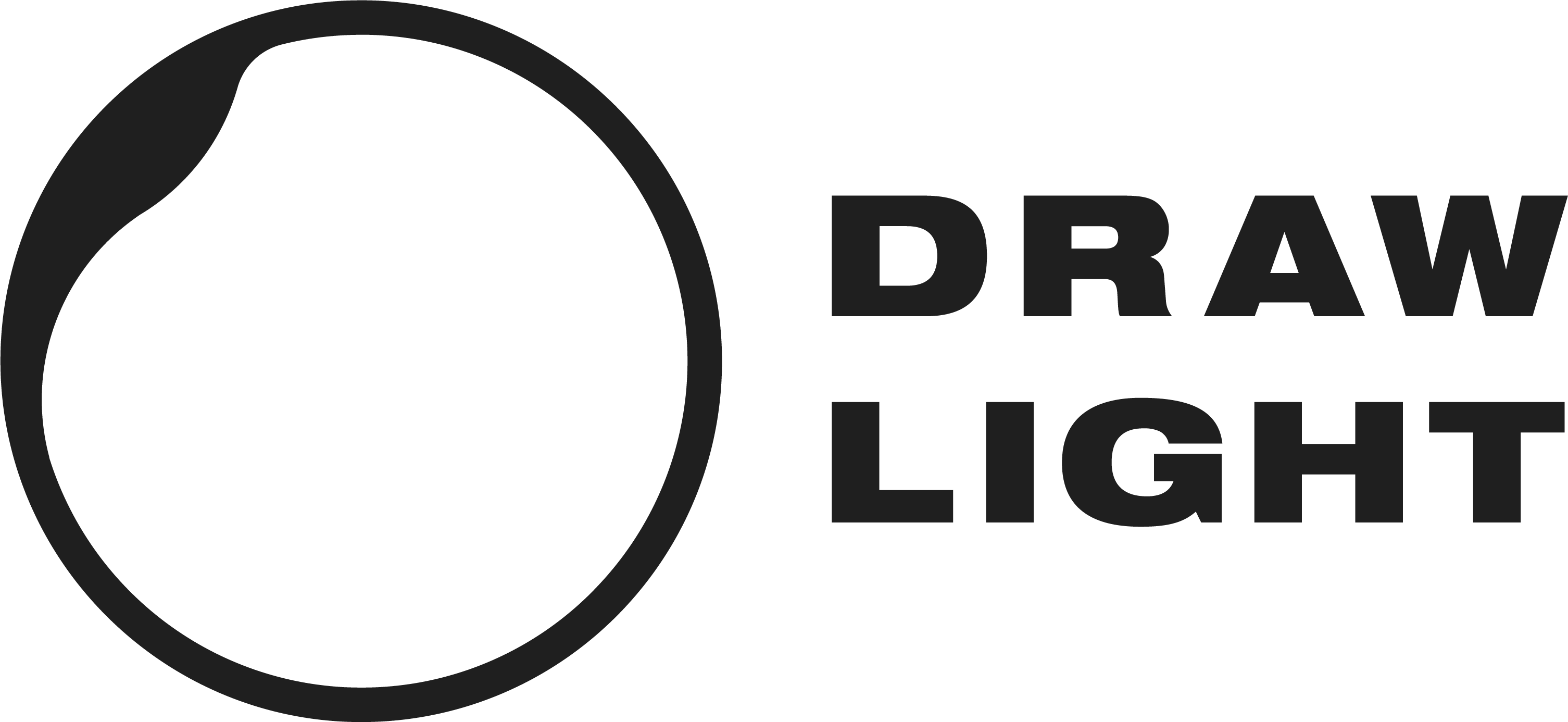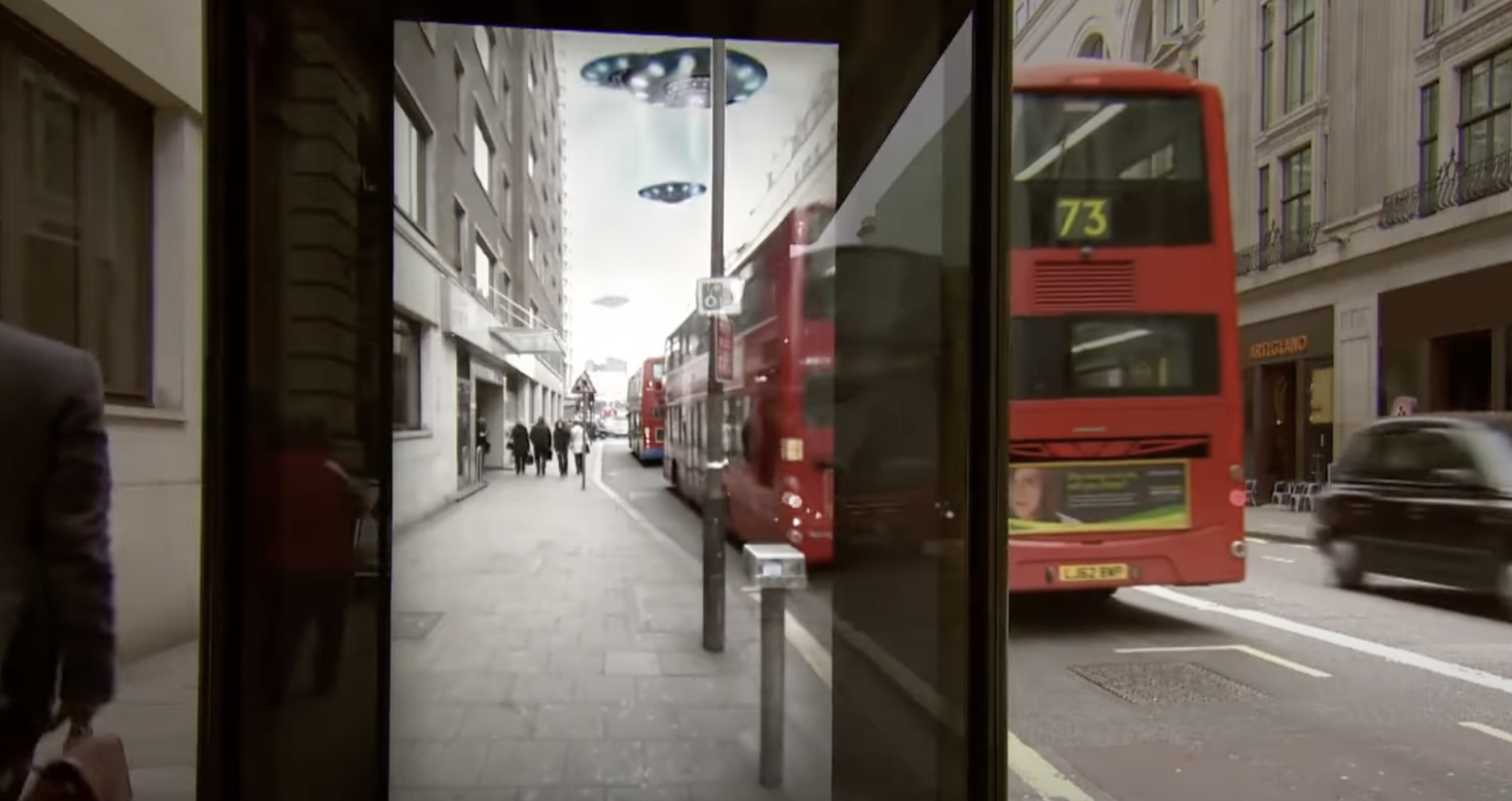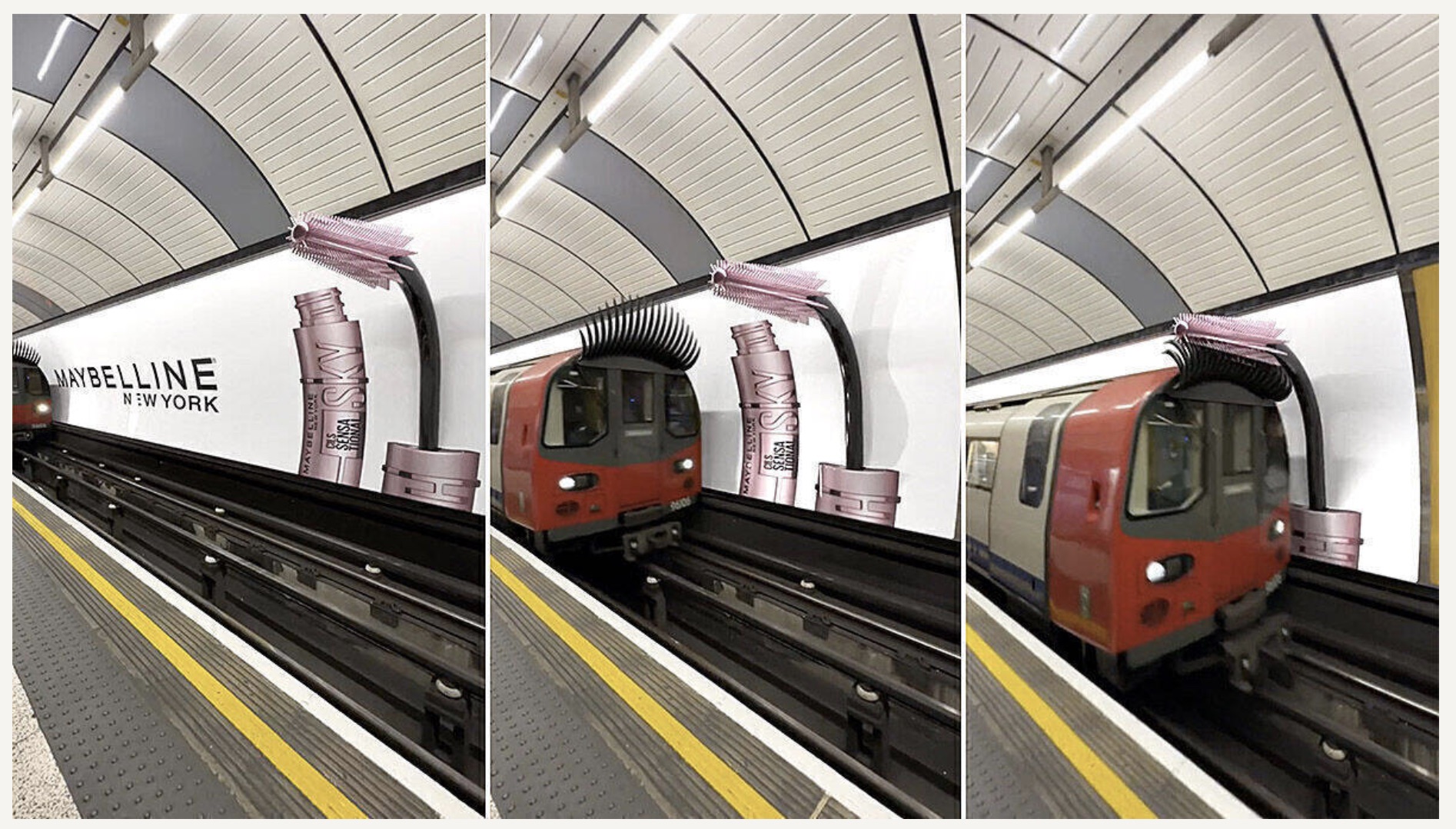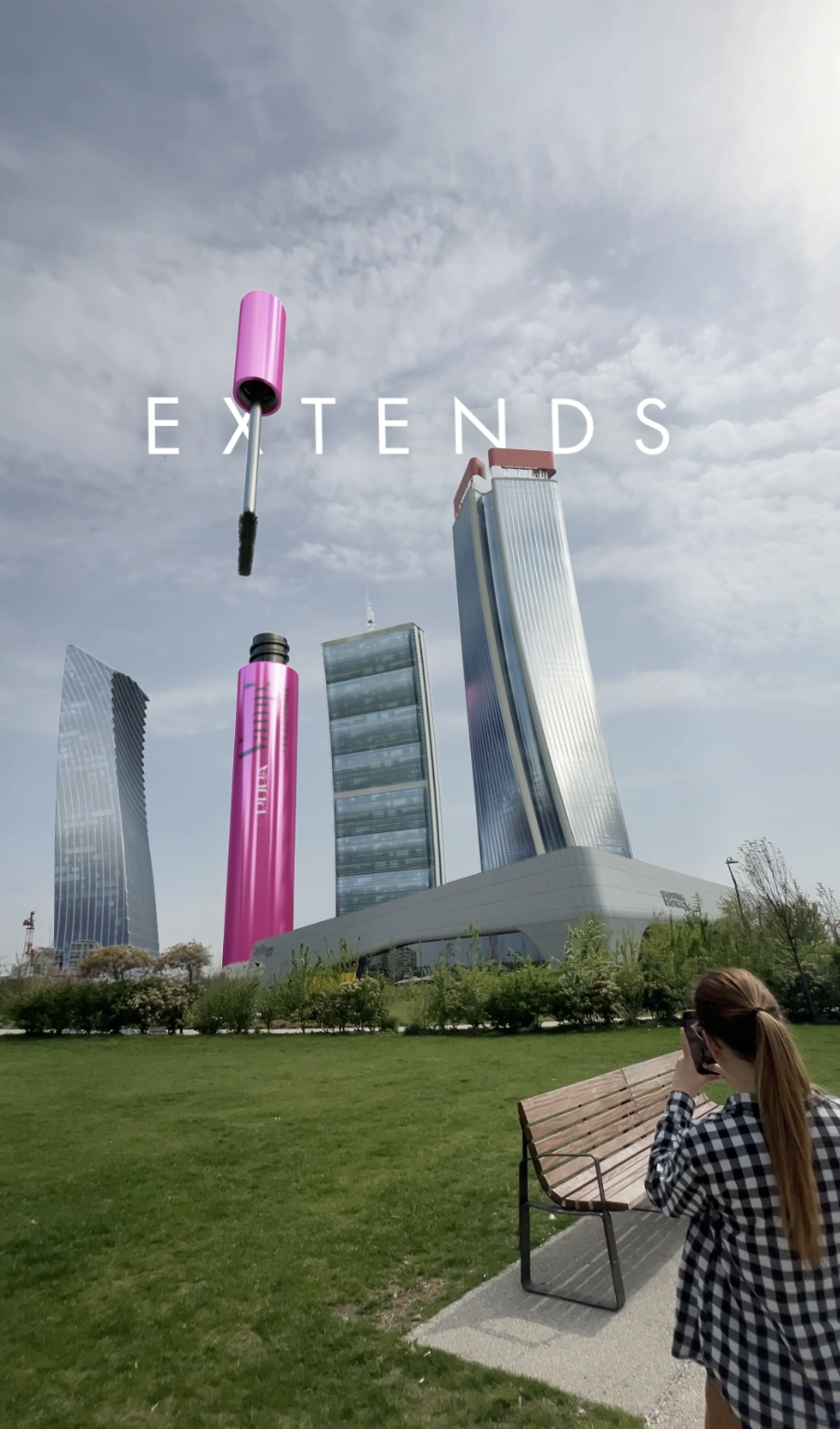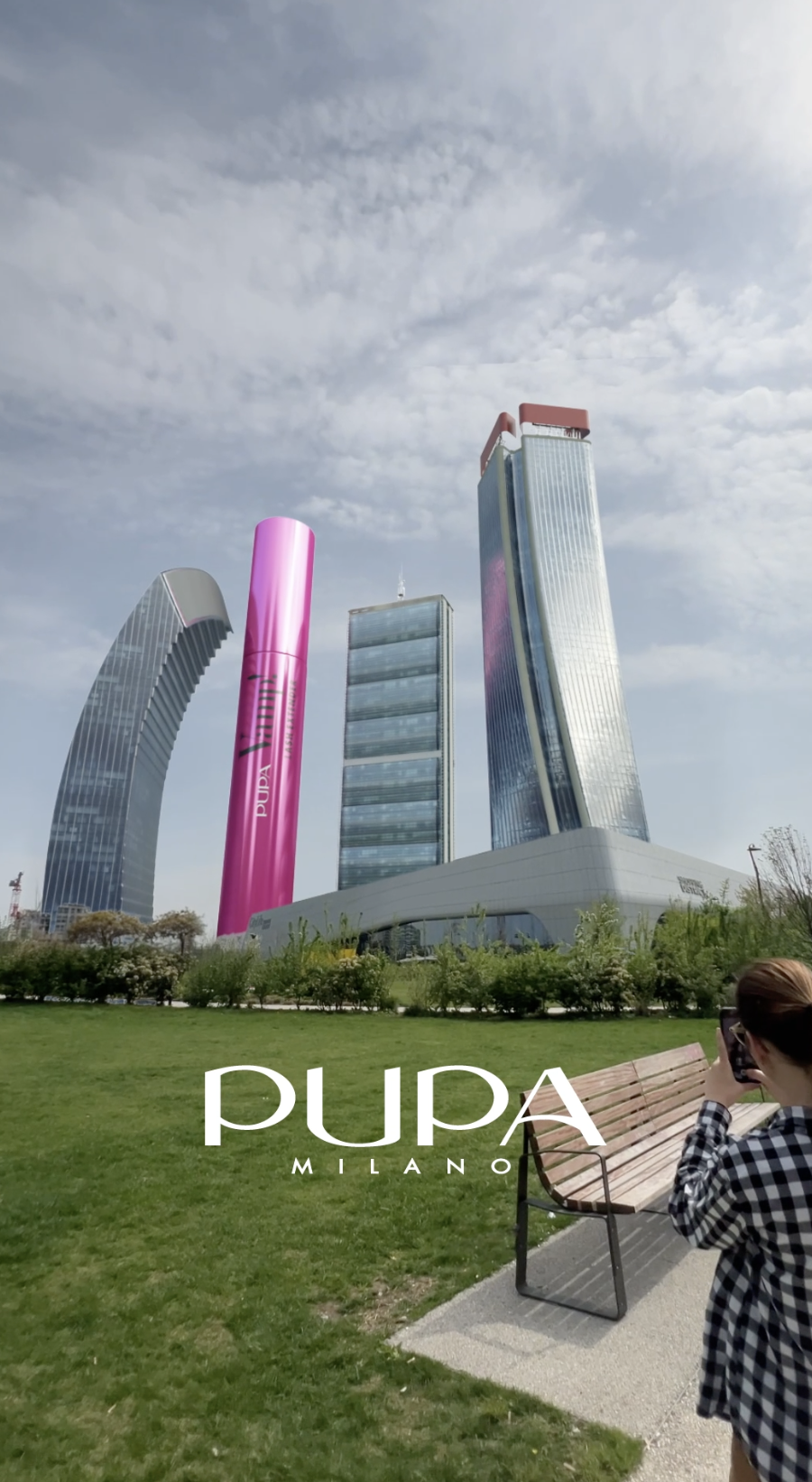FOOH – FAKE OUT OF HOME ADVERTISING
THE NEW HORIZON OF VISUAL COMMUNICATION
Neuroscience:
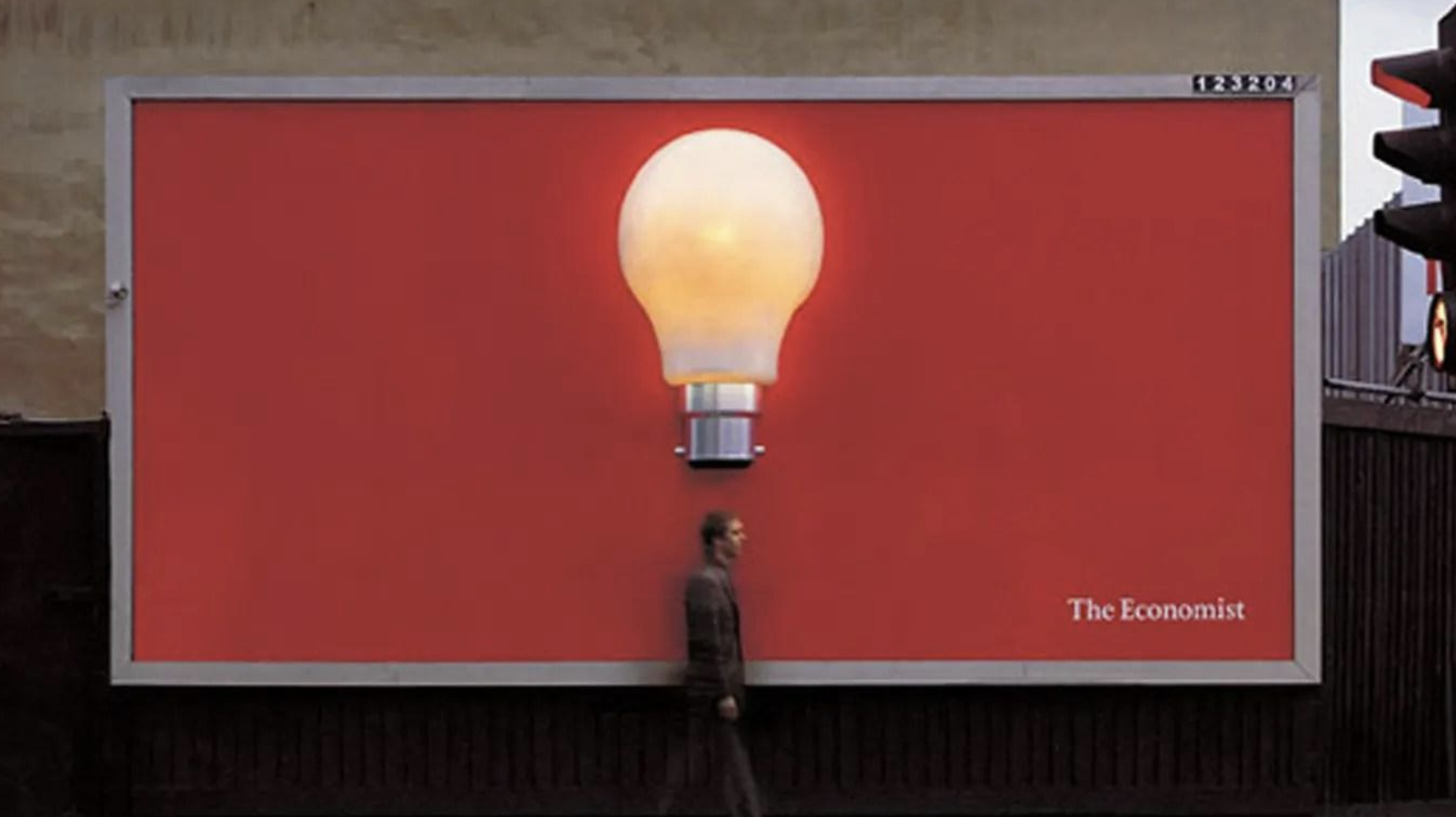
The Economist “Lightbulb”, United Kingdom, 2005
The growing prevalence of digital technologies has led advertising to undergo an increasingly significant transformation, giving rise to the so-called Digital Out of Home (DOOH). In DOOH, digital screens and interactive displays integrated into urban environments are a key component. They allow for real-time content updates, greater interaction with the audience, and message customization based on context and target audience.
DOOH itself has further evolved and become “hybridized” by integrating new technological innovations. A famous example is Pepsi Max’s campaign, which turned bus stops into gateways to a world of fantastic adventures. At the core of this campaign is a concept of mixed reality in which the “classic” DOOH technologies (digital screens integrated into urban settings) were combined with new augmented reality technologies: passersby could see on the bus stop shelter screen alien creatures, giant robots, and apocalyptic scenarios that seemed to come to life right before their eyes. This campaign not only captured the audience’s attention but also generated a huge impact on social media.
Pepsi Max “Unbelievable Bus Shelter”, Londra, 2015
In this constantly evolving context lies Fake Out of Home Advertising (FOOH), an innovative marketing technique that blends real footage and CGI to create visual illusions. Unlike DOOH, FOOH does not use physical screens but exists solely in the digital realm, spreading across the web and social media through reels and TikTok.
FOOH allows companies to experiment and be creative, surpassing the physical limits of traditional advertising and offering immersive and surprising experiences that capture attention in new and unexplored ways. This type of advertising can benefit from enormous resonance due to the virality they can achieve on social platforms, allowing for visibility impossible with traditional campaigns.
The Technology behind Fake Out of Home Advertising
To achieve the communicative goal of reinventing reality with visual illusions while keeping it extremely authentic, FOOH relies on some unique technical features.
On one side, there are images and videos of real environments and locations. These serve as the foundation for constructing the “new reality.”
On the other hand, a careful use of CGI to create realistic-looking 3D elements that seamlessly integrate into the context of the real footage. This technology, predominantly used in the film and video game industry, is now being applied in advertising to create scenarios that capture the audience’s attention. These images are paired with contextually appropriate sound effects that further enhance the realism of the experience.
In some cases, human “extras” can be added, whose acting further bolsters the effect of authenticity and engages the viewer, making them feel like part of the real audience and co-participant in the viewing experience.
The 2023 Maybelline campaign for the launch of their new mascara was a significant example in this regard.
Maybelline “Sky High con Flex Tower”, Londra e New York – ambientazione, 2023
The incorporation of extremely simple yet potentially realistic CGI elements in everyday contexts has built an environment that is absolutely credible and astonishing, to the point of inducing doubt as to whether they were real billboards (and thus OOH).
Technology but also Space and Experience
Fake Out of Home Advertising is not just a matter of technology but also of spatiality and experience. The creatives and brands adopting this approach aim to create an “augmented” world, where reality is transformed and enriched to surprise and captivate the audience. What is created is a new visual experience that ends up challenging the concept of “truth.”
With the hyper-realism of FOOH works, the goal is to captivate the user and guide them through an experiential and perceptual journey of a “different” reality, innovative yet with familiar traits. The very concept of truth is called into question, and the user is a witness and participant in a unique and extraordinary event, so concrete that, for many, it is difficult to distinguish from reality.
The “Design Meets Beauty” campaign by Pupa Milano for Design Week, created by Drawlight, further leveraged and elevated this concept. Leveraging the context and user expectations for the event, Pupa “installed” their products in various iconic and familiar locations in Milan (Galleria Vittorio Emanuele, Piazza Duomo, and Brera) as if they were huge design installations.
Pupa Milano “Design Meets Beauty”, Milano – ambientazione, 2024
In the launch video of the Vamp! Lash Extender mascara, it is instead the “function” of the product that takes the spotlight. Moving among shapeless skyscrapers, the mascara wand amplifies, lifts, and extends their structure. The uniqueness of the location (buildings with linear architecture well separated from each other) allowed for the recreation of the buildings in 3D and manipulation as desired. The spectator filming the scene attests to the extraordinariness of the phenomenon and makes it “real”: anyone faced with such an event would have grabbed their smartphone to capture the scene.
Pupa Milano “Design Meets Beauty”, Milano – ambientazione, 2024
This interaction between different elements transforms a advertising message into something deeper. Fake Out of Home Advertising (FOOH) creates fantastic and unforgettable scenarios that emotionally engage viewers, leading them into an alternative and wonderful world where everything seems possible. This approach not only captures attention but also creates an emotional bond with the brand, making the advertising experience more meaningful and lasting.
Companies and Fake Out of Home Advertising: an Opportunity
For companies, Fake Out of Home Advertising proves to be a tool that allows them to differentiate themselves in an increasingly saturated and competitive advertising market. FOOH offers the possibility to create unique and innovative campaigns that capture attention and remain ingrained in the public’s memory.
Furthermore, FOOH allows emotionally engaging viewers, creating a deeper and more meaningful connection with the brand. The immersive and surprising experiences offered by FOOH can generate significant word-of-mouth and strong resonance on social media, amplifying the impact of the campaign.
Additionally, FOOH represents a potentially sustainable and environmentally friendly form of advertising, as it uses digital technologies that reduce the need for physical materials and waste. This approach aligns with consumers’ increasing expectations for responsible and sustainable business practices.
Fake Out of Home Advertising thus represents a new frontier of visual communication, capable of transforming how brands interact with the public and the urban environment. Companies that embrace this innovation, fully understanding their audience’s expectations without compromising customer trust, will have a significant competitive advantage, imprinting a unique experience in users’ memories.
.
Simone Rotili
Head of SEO & Search Advertising Akasearch
Giulia Lazzaretto
Creative Designer DrawLight
